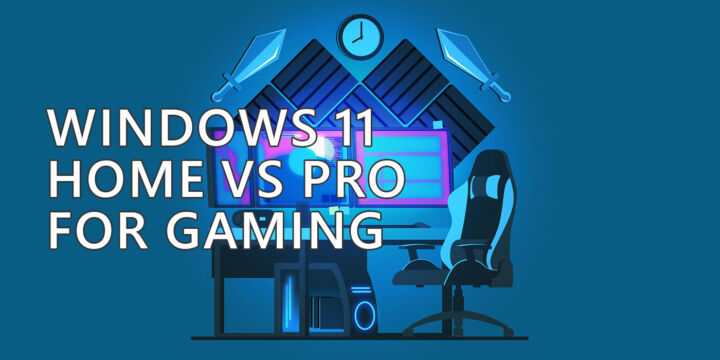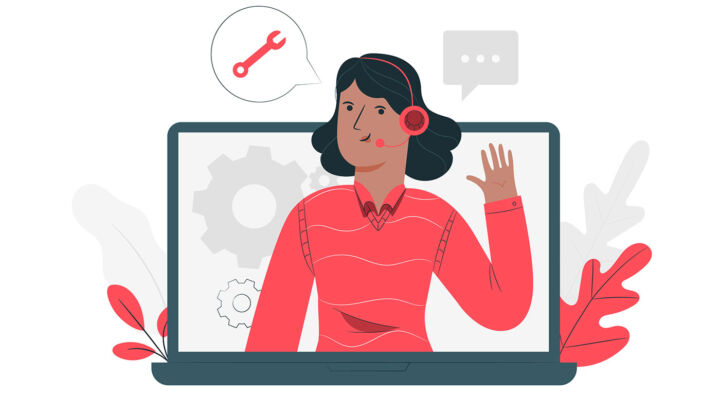- Confused about S3, Sleep, Hibernate, and similar terminologies?
- You came to the right place as I’ll explain all computer power states available to a modern Windows computer.
- Learn the differences between power operating modes, how they work, and what components are turned off or consume less power in each power state.

Lately, I’ve been talking a lot here on BinaryFork about computer power states, what each mode represents, which components are turned off or switched to a low-power mode, and how fast the computer can resume from each mode.
I then realized there’s no article that centralizes all this info in a single page, with a nice table to summarize everything for those of you who don’t have the time to read all this technical mumbo jumbo.
What are ACPI Computer Power States?
ACPI stands for Advanced Configuration and Power Interface and is the standard that defines the various power states a computer can be found in.
Each ACPI state defines which components are fully active, which should be sent to a low-power state, and which are turned off.
System Power States in Windows Compared
Even if for a casual user a PC may only be On or Off, in reality, it’s not a binary situation. There are quite a few computer power states, some of them well known (Sleep, Hibernate), some a little more nuanced (Fast Startup, Hybrid Sleep, Modern Standby).
Here’s a comparison table to help you out:
| Power State | ACPI designation | Description |
| Working, fully functional | S0 | It’s the normal “Computer is On” operating state. Components that are not in use can still enter lower power states to save power. |
| Modern Standby / Connected Standby | S0 Low Power Idle | A new mode meant to rival the Apple instantaneous resume. It’s a very fast Sleep state where components are able to switch to a high-power mode very quickly. Compatible apps are able to refresh in the background periodically, so when you resume work you shouldn’t have to wait for apps to update (just like a smartphone works). Modern Standby requires specific hardware to work. Systems that support Modern Standby can’t use other ACPI Sleep states. It can be turned off if it’s too buggy, or tweaked if it drains your laptop’s battery. A power failure will require a full boot and resuming work is impossible because the RAM contents can’t be recovered. |
| Sleep | S1, S2, S3 | There are multiple levels of sleep, depending on hardware compatibility. S3 consumes less power than S2, which also consumes less than S1. In Sleep the computer seems off, with an optional power LED pulsing to indicate to the user the computer is not completely turned off. In Sleep, the RAM is kept refreshed so you can resume work from where you left it. Some components are also kept in a low-power state waiting for user input or a special magic packet sent to the LAN interface. In case of a power failure the system will perform a full boot, so resuming work is impossible. This is solved by Hybrid Sleep, which also writes the RAM contents to a file to disk. This mode is slower to enter, and safer at the same time. |
| Hibernate | S4 | Hibernation is a power state where the computer seems to be fully off, with most components turned off. Keyboard, mouse, and LAN inputs will be monitored, depending on settings, so that the system can resume. In Hibernation, the RAM contents are written to a file on disk. When the system resumes, the file contents are copied to RAM so you can resume exactly from where you left off. Even in the case of a power outage, you can still resume work when the computer exits from hibernation. Fast Startup is a hibernation mode where the user is logged out before the creation of the hibernation file. Resuming work is impossible because apps are closed before logging out. The advantage is just a quicker system boot. |
| Restart (soft off) | S5 | Then you restart your computer for a moment it looks like it’s turning off, then on again. This is the soft off (ACPI S5) power state, composed of a shutdown and a full boot cycle. |
| Mechanical off | G3 | The computer consumes no power in this state. All internal components are off. Mechanical off is a full system shutdown. A complete boot is required to get up to working again (ACPI S0). |
And there you have it, all computer power states explained in one (hopefully) easy-to-read table.
Do you have anything to add to make this more useful, or do you have questions? Leave a comment below.







